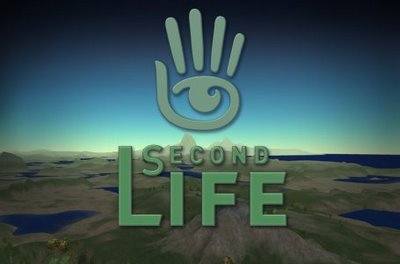
Second Life is a 3-D virtual world entirely built and owned by its residents. Since opening to the public in 2003, it has grown explosively and today is inhabited by a total of 1,153,948 people from around the globe. Click here to learn more
Second Life (SL) is a privately-owned, partly subscription-based 3-D virtual world, made publicly available in 2003 by San Francisco-based Linden Lab and founded by former RealNetworks CTO Philip Rosedale. The Second Life "world" resides in a large array of servers that are owned and maintained by Linden Lab, known collectively as "the grid".
The Second Life client program provides its users (referred to as Residents) with tools to view and modify the SL world and participate in its virtual economy, which concurrently has begun to operate as a "real" market. At precisely 8:05:45 AM PDT, October 18th 2006, the population of Second Life hit 1 million Residents.
Second Life has its own economy and a currency referred to as Linden Dollars (L$). Residents receive an amount of L$ when they open an account if they supply credit/debit card details, and used to receive weekly stipends thereafter — only premium accounts and basic accounts that were already receiving stipends currently receive stipends. Additional L$ are acquired by selling objects or services within the environment.
Linden Lab has stated that the Second Life economy generated US$3,596,674 in economic activity during the month of September 2005. According to a September 2006 Popular Science article, Second Life, through currency trading, shopping and land sales, has a GDP of $64 Million.
Second Life has three membership plans.
- Basic - Free
- Additional Basic — one time fee of US$9.95
- Premium — There are three billing options for Premium accounts:
- Monthly — US$9.95
- Quarterly — US$22.50 (US$7.50/month)
- Annually — US$72.00 (US$6.00/month)
All account types receive a signup bonus if payment details are provided — L$250 for Basic and Additional Basic, L$1000 for Premium. Providing payment details for Basic and Additional Basic accounts is entirely optional.
The pricing plan for Second Life has varied over time. Earlier versions did not feature free first-time Basic Accounts, or required a fee paid for every basic account beyond the first. During the beta period, Residents had the option of a lifetime subscription for a one-time payment of US$225.00. After the release of SL 1.2 and the introduction of tiered land payments, this turned into a lifetime tier-free ownership of 4096m2 of land.
Stipends
Eligible Residents receive stipends once a week - Basic and Additional Basic accounts have to log in during the weekly period in order to receive theirs, Premium accounts do not (they receive the stipend regardless of account activity).
- Those registered before May 29, 2006 receive L$50/week
- Those registered after May 29, 2006 receive no stipend
Stipends for Premium accounts have also changed over time:
- Those registered before July 21, 2006 receive L$500/week
- Those registered before November 1, 2006 receive L$400/week
- Those registered on or after November 1, 2006 receive L$300/week.
Land Ownership
Premium members also have the ability to own land (up to 512m2 without additional fees). Owning larger areas of land attracts an increasing additional fee (what Linden Lab calls "tier") ranging from US$5 a month up to US$195 a month for an entire 65,536m2 of land or individual island.
Linden Lab usually sells land in small 512m2 blocks (16 by 32 meters) through its First Landprogram, or as entire 16 acre (65536m2) regions. Residents also buy and sell land to other Residents, generally intending to make a profit by selling the plots of land at a price higher than the original purchase cost.
First Land
The First Land program is used to reserve small blocks of land for first time land buyers, intending to decrease the cost of land for new premium accounts. This program also serves as an incentive for new Residents with free accounts to upgrade to premium accounts. A Resident pays a fixed fee of L$1 per 1m2 for a 512m2 plot.
These First Land plots are frequently consolidated into larger plots when the original owners sell them to other residents.
Regions
- Regions put up for auction are usually accesible from the main continent (e.g. by crossing the simulator boundary) of Second Life.
- Regions purchased privately are not allowed to be accessible directly from the main continent of Second Life, multiple regions can be purchased and placed next to each other creating their own island or small continent.
The high land tier fees (US$195 a month) associated with owning a 16 acre region have resulted in many privately purchased simulators being focused solely on content that can return a profit, reducing the variety available. There are exceptions to this behavior, such as Svarga (an artifical eco system driven by LSL, created by Second Life Resident Laukosargas Svarog
A region can theoretically hold up to 100 users at a time, but performance can severely degrade at these numbers, and factors such as the amount of prims and active scripts running on the server also factor into performance.
Openspaces
Whereas normal private islands run on their own dedicated CPU, the Openspace regions run four per CPU: this limits their performance. Each of the four is limited to only 1875 prims. Openspaces only ever share with other openspaces on a server. Openspaces must be anchored to a normal existing Island or be used in a series to create space between islands. In other words, they cannot be used to “float” space on their own.
No comments:
Post a Comment